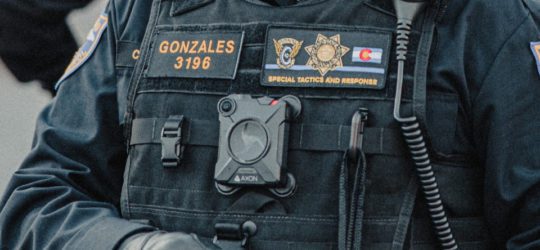Investigations | Abandoned Houses

Yet another overlooked element to investigations is the reporting of abandoned houses. The way law enforcement comes across abandoned houses are through a hodge-podge of third party reporting. Sometimes, a neighbor will call authorities about strange noises and disturbances at the house in question. Sometimes the municipal government acquires the house via tax liens, and notifies law enforcement as a courtesy, of the now government-held/owned property. And sometimes, law enforcement come across an abandoned home in the course of their own activities on patrol. However, an abandoned home is located, there is a procedure that should be in place for each instance. But, we will look beyond those considerations in this article, and discuss why abandoned homes should be viewed as a valuable location to conduct scene investigations, once proper documentation for that investigation has been acquired.
Criminal Trends in Abandoned Houses
More and more, law enforcement is finding that abandoned houses are breeding grounds for both criminal activity within them, and the evidence of criminal activity from other locations. However, some communities are also finding that the way they discover these crimes is through a very dangerous circumstance bared by the public; arson. In many urban-centric communities, arson of abandoned homes is becoming a regular threat to public safety, and in some communities, has been for quite some time. We’ve discussed previously that arson is used as a method of collecting insurance pay-outs fraudulently, but arson in these instances tends to be related to covering up of crimes, and quite often those crimes are homicide. Whether it is a dead body, the weapons used, the materials used to scrub the scene of the original crime, or if the abandoned house is the scene itself, arson has become a go-to strategy for the most dangerous criminals, in an effort to cover up their culpability. In these cases, we have exigent circumstances for investigating such an abandoned house: the fire itself requires professional firefighters to arrive and extinguish the fire; the fire marshal will need to investigate as soon as it’s safe to do so, mainly because there will be no one on scene that can, or will, explain why the fire happened to begin with. And that fire marshal will ultimately find evidence of additional crimes and need to report this to law enforcement. Many agencies will obtain a telephonic warrant to then search the scene; and thus, a homicide investigation begins.
Those circumstances tend to be cut and dry; but what about a house that is abandoned, or appears to be abandoned, and seems off from the rest of the neighborhood? What if neighbors complain about people entering leaving at all hours of the day and night, and there seems to be no home owner to be located? In these cases, law enforcement may need to consider some proactive measures to address the abandoned house.
Documentation and Case Law
Case law requires we approach and deal with an abandoned home virtually the same way we would an occupied home. Some will argue that US v. Robinson spells out that an abandoned property is not subject to 4th Amendment considerations. This is an inaccurate interpretation. For those unaware, in 1967, Edwin Robinson, Benjamin Luke, and Edward Zak were involved in three bank robberies in the State of Michigan. FBI Agents arrested all three men in a public location, who had purportedly been hiding out in Zak’s apartment. In one of the robberies, a teller, who then became a crucial witness of the prosecution, described in specific detail a hat that Zak had allegedly worn during one of the robberies. Agents waited 34 days after incarcerating all three men, to then seek permission from the building manager, to search Zak’s premise, rather than securing a warrant.
Agents located the hat, and formally charged Zak in all three robberies, rather than the last one. Zak’s attorney filed an appeal, due to the one piece of evidence linking his client to the crimes, was ‘fruit of a poisonous tree.’ The Sixth Circuit Court of Appeals agreed with this appeal, which led to Zak being fully exonerated in the matter. The point of contention that had come up was that since Zak was no longer a paying tenant, and more than 30 days lapsed, the apartment, in the view of FBI Agents, was in fact abandoned, and Zak had no claim to the apartment, nor the contents inside. While we could speculate as to the reasons why the Agents waited 34 days specifically, it is clear that Zak was deprived of his ability to claim his property, as he was in custody, nor did he have access to arrange payments for his apartment. The court therefore affirmed the tenets of the appeal.
The court rested its decision on four other cases, US v. Minker, Friedman v. US, Coleman v. Maxwell, and Linscomb v. Goodyear Tire & Rubber Company. These four cases involve claims where a third party asserted that a person in question abandoned property, and in all four cases, no direct, specific assertion by that person was ever made, which ultimately led to the parties receiving their property back, and either damages to the competing party were assessed, or criminal charges dismissed. In each of these cases, personal property was the subject. The Sixth Circuit borrowed those conclusions to write its majority opinion, as case logic would apply to domiciles. Not to mention, the Fourth Amendment pretty much spells this out, and it’s anyone’s guess what was being taught to law enforcement in the 1960’s concerning how to handle abandoned domiciles, more accurately how and when to classify domiciles as abandoned. Which is what Robinson ultimately spelled out. The Sixth viewed the building manager as a prejudicial witness, who granted access to the apartment, after confirming to Agents that Zak hadn’t paid his rent in a month. And the second witness the prosecution relied on, a friend of Zak’s wife (they were not living together at the time of the crimes), was based on responses to what the court ruled was leading questions, providing subjective context to Zak’s alleged abandonment of the apartment, where the witness confirmed she had helped Zak’s wife retrieve possessions belonging to Zak.
Because of this case, and it’s many case law citations, law enforcement must treat abandoned houses like any other house. And, in the case that the house owner is imprisoned, law enforcement must obtain specific documents from the owner that state the house to be abandoned, in order to search outside of obtaining a warrant. Only documented consent from the legal owner, or exigent circumstances (a criminal subject running from law enforcement, into an abandoned house) permit officers to enter the domicile, and upon making lawful detention/arrest of the people question, can then search the property for evidence relating to the crime at hand. However, what are officers to do if they then come across evidence of other crimes?
While case law does not outline this situation, you can bet that policy changes, based on the jurisdiction. Best practice is to document the evidence in question (photographs), stop the active search, notify supervision of the discovery, exit and seal the abandoned house, and apply for a search warrant. The exigent circumstance of capturing an evading criminal, and evidence of their crimes still applies, but discovery of new crimes essentially defines that abandoned house as an entirely new crime scene, and thus, exigent circumstances does not necessarily apply. It is true, that there are some exceptions, and the court is not always going to be uniform in it’s interpretation of Fourth Amendment procedure, as it relates to new discovery on-scene, but making the process uniform for officers is the best way to eliminate bad searches, which lead to dismissed charges, like that in Robinson.
This same approach should be used when dealing with reports of an abandoned house, that has squatters present. As the example in the introduction implies, there are times when law enforcement is informed by neighbors of an abandoned house, where people who do not own the house are actively or passively within the property. If police can establish who the legal owner is, contacting them prior to contacting the house is a best practice, because if they establish that they no longer have interest in the property, and that no one else should be there, officers have established the house is indeed abandoned. Clarifying consent from the house owner is the next logical step, prior to entering the house. If this is not possible, and officers still believe a significant crime is occurring, sealing off the immediate area, and contacting counsel to establish facts for an affidavit prior to obtaining a warrant is in order. When the warrant is issued, enforcement actions can be carried out. But, there is one more important task that officers should consider; notifying the responsible government agency within their jurisdiction that the legal owner of the house made statements to them that the property was indeed abandoned. By doing so, this empowers that agency to contact the owner and potentially obtain the house from the owner, so that control of the property can then be transferred to an interested private party. This is of course a simplified sentence, because this particular process will take quite some time. But it’s important for officers to make this notification, especially if they want to reduce the effort to enforce criminal activity on a bonafide abandoned property in the future.
That last example transitions us to the last example concerning abandoned houses; those held by the government. We say ‘held’ because while the government is indeed the legal owner of the property, it is never in the interest of the government to own a residence, especially an abandoned house in need of maintenance and repairs. However, there are instances where legal owners become delinquent on their property tax, or a house does not have a defined recipient at the conclusion of a person’s estate. Typically, a government will open their own land bank to deal with these instances. You can find examples of these systems in Detroit, Flint, Kansas City, Atlanta, Ohio, West Virginia, and many other municipal and State governments. With the government retaining property rights, this makes the job of officers much easier. They don’t have to acquire warrants, and they don’t have to wait for one upon discovering unrelated activity/crime from their original purposes from entering. This a much easier way to contending with the criminal use of abandoned houses. However, if your jurisdiction has created a land bank, it is likely that you have neighborhoods in your jurisdiction with overwhelming quantities of abandoned houses, and therefore, it is problematic from an entirely different perspective to deal with the many problems that arise out of them concerning public safety. The best strategy that law enforcement has in this case, is to document every interaction involving land bank property, and make investigative statements available to land bank personnel that document the condition of the properties responded to, highlighting the continual destruction by criminals, as well as the evidence and types of crimes discovered. While it’s not going to move mountains, it will provide extra motivation for the land bank to clear the houses’ title, and get the property settled to a private party interested in restoring the house for true residence.
Additionally, when it comes to government-held houses, your investigative staff should make a routine of inspecting those properties at random interval. During the day, or night, and always with proper evidence handling equipment and protection barriers at hand in case a crime scene develops. By adding this extra element of not just patrol, but also investigative function, into the routine of abandoned houses owned by the government, it eliminates the allure that criminals have over abandoned houses in your jurisdiction. And by eliminating that value, you do more to reduce crime than any other proactive measure concerning abandoned houses can accomplish. For criminals, abandoned houses are cozy places where their activities are concealed. Making it difficult for them to get comfortable means you won’t be responding to those houses routinely, if at all. Investigative staff should be considering previously reported crimes when conducting these in-general searches, and freely packaging, and documenting items that may have possible connections to those crimes. And officers should not be shy about making their presence known while conducting these types of searches. The more people in the area know they are present, checking for criminal activity, the less attractive that abandoned house is.
Conclusions
Abandoned properties can be havens for criminal behavior, ranging from drug dens, to theft rings, to murder. They serve as a breeding ground for criminals to reside in, virtually undetected, while harming a community, and also a place to dispose of evidence where law enforcement access is restricted. Putting together a plan for mitigating the challenges of abandoned properties, whether they pose a specific risk or not right now, is prudent for law enforcement. The more you spell out, the more you think of the problem ahead, the better your personnel will respond, and the less chance that crime can grow via abandoned houses in your jurisdiction.
Be safe out there!





